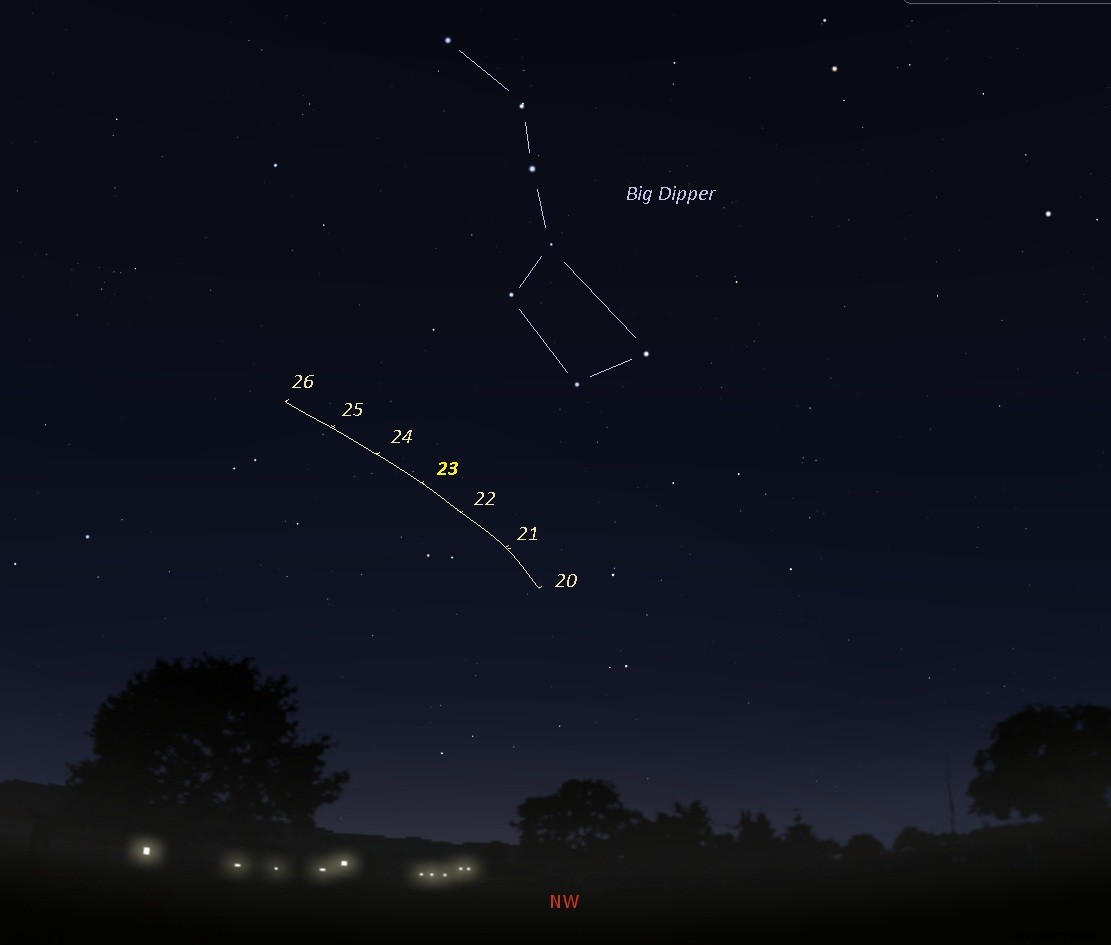C/2020 F3, nicknamed comet NEOWISE, is currently visible to the naked eye in the French sky. To spot it, all you have to do is observe the claws of the Great Bear. A fascinating spectacle that won't last forever!
If comets ATLAS and SWAN were to be the stars of this summer, it is ultimately NEOWISE that makes the show. Discovered on March 27, the comet has already passed as close as possible to the Sun without breaking up. It will make its closest approach to Earth (103 million km) on July 23. In the meantime, the comet is far enough from our star to be visible to the naked eye.
As of July 13, Neowise was visible at the first light of dawn. Early risers should then watch for it to rise above the northeast horizon, around 4 a.m. At our latitudes, the comet therefore continued to be visible at the end of the night. On the other hand, from this evening (July 20), it will become very difficult to distinguish it at dawn, its light drowning in the mists that line the horizon.
To enjoy the show, night owls now have the advantage. And for good reason:C/2020 F3 has been distinguished for a few days from the departure of the Sun. Obviously, the more the sky darkens, the more it begins to shine. To spot it, aim between the two legs of the Great Bear, on the northeast horizon.
On the night of July 22-23, when the comet will be closest to Earth, then direct your gaze above the claws of a hind paw. Then come back between the two legs the next two days.
After July 27, the comet will race towards Berenike's Hair, between Le Lion to the west and Bouvier to the east. During this period, however, the observation of the comet should be done with binoculars or an astronomical telescope.

You will understand, you only have only a few nights to enjoy the spectacle with the naked eye. So it's now or never. And for good reason:it is indeed expected that C/2020 F3, which is a so-called long-period comet, will not return to the vicinity of the Sun only in 6,800 years!
If the comet is still visible for a few days from the ground, it is also visible from the International Space Station (ISS). The astronauts and cosmonauts currently on board did not miss the event. Evidenced by this video provided by Space.com, based on photos taken by Russian cosmonaut Ivan Vagner.